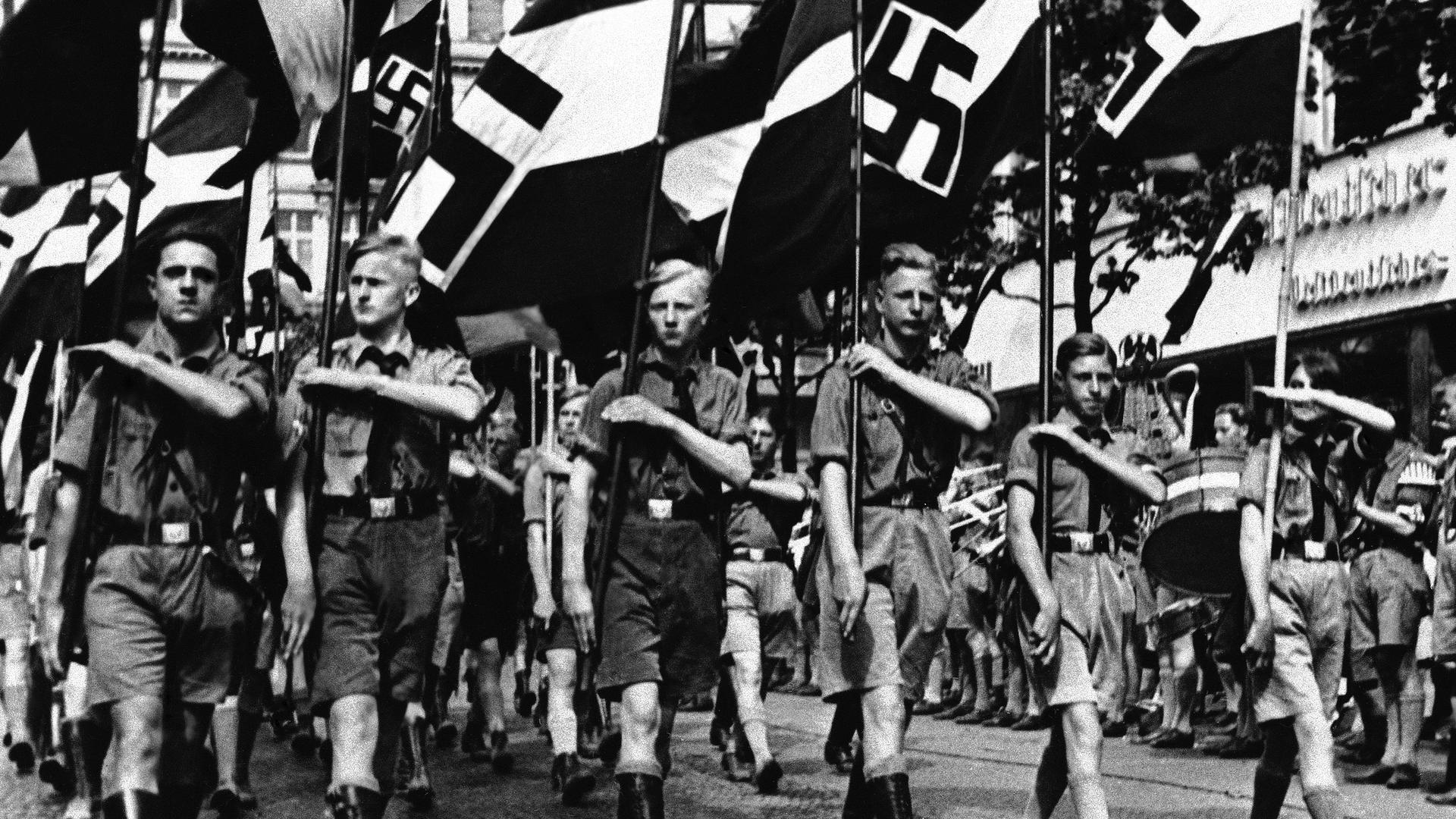This analysis was featured in Critical State, a weekly newsletter from The World and Inkstick Media. Subscribe here.
Last week, Critical State took a deep dive into research on how states’ difficulties with extending power into borderlands changes how they make and implement policies for those areas. This week looks at research on what happens when a state makes a major effort to incorporate borderland residents into the core state identity.
Related: Political science of the periphery: Part I
During World War II, Nazi Germany added much of the land around Germany to its Reich. The idea that the concept of Germanness extended beyond the geographical bounds of Germany was core to Nazi ideology. When new countries or regions were added to the Reich, part of the Nazi political and ethnic project in those territories was Germanization — making new members of the Reich feel German. This involved extending the Holocaust into those areas as a means of brutal ethnic cleansing, but it also meant education programs on Germanness for those who were not killed or imprisoned. Among these education programs, few were more fundamental than the Hitler Youth, which sought to inculcate young people with German identity at their most impressionable age.
Related: Civilian labor in reconstruction: Part I
In a recent article in the Journal of Borderland Studies, historian Lisbeth Matzer writes about how the Germanization project of the Hitler Youth played out in the borderlands of the Reich’s new holdings. In two areas on the border between Slovenia and Austria — Lower Styria and Upper Carniola — records of Hitler Youth activities during the war have survived, allowing historians to piece together the German approach to incorporating borderland youth into the Nazi project.
Related: Civilian labor in reconstruction: Part II
Lower Styria and Upper Carniola in 1941 seemed primed for Germaization in some ways. A German-speaking minority already lived there, and had a long history of political organizing around German identity. They had established clubs which funded German-only schools and tried to encourage Germans and Austrians to move to the borderlands to grow their demographic power. They even requested that Germany annex the regions after the Nazis came to power, and the Nazis eventually obliged.
That the German-speaking minority in Lower Styria and Upper Carniola was organized to that extent against the states that controlled those regions speaks to the nature of life on the periphery. Living on the border meant being able to build an entire life around affinity with Germany, rather than Slovenia or the Habsburg Empire or any of the other polities who had actual territorial claim to the area at various points. When German annexation did come, then, part of their pitch to the residents of Lower Styria and Upper Carniola was that joining Germany gave them the opportunity to be part of the ethnic, if not geographical, center of a large German state, rather than at the periphery of a Slovenian one.
That offer was compelling to many German speakers, but the Nazis wanted to get the non-German speaking majority to buy into it as well. After the German campaign against the Soviet Union started to go poorly, the Nazi war machine could ill-afford to be picky about who it recruited into its ranks — it needed the young Slovene speakers of Lower Styria and Upper Carniola as much as it needed the young German speakers. To that end, the Hitler Youth began a project to, as they put it, “remind” locals of their essential German nature that was expressed not in their native language but through (and this is some prime Nazi propaganda speak) “the voice of the blood that flows within you.” “According to your blood,” a German propagandist concluded, “you belong to us.”
Youth were strongly encouraged to express their inner Germanness by speaking German. All schools conducted instruction in German, and Hitler Youth groups ran required German language courses for members. Speaking Slovenian during youth group activities was prohibited, and there were competitions organized between youth units to see who had the best German language skills. The better part of the Hitler Youth resources were put into welcoming a new generation of Lower Styria and Upper Carniola young people into the master race through language instruction.
Yet, it didn’t work. Many young people joined the Hitler Youth, responding to a range of powerful state inducements to do so. Inside the group, however, commitment to the German language didn’t take. When unit leaders weren’t watching, many youth would converse in Slovenian. In some areas, it was the Hitler Youth that was forced to bend to local linguistic customs, sending out invitations to unit events in both German and Slovenian. Most people never came close to the stated goal of the Styrian Hitler Youth, that Styrian and Carniolan youth “not only learn German, but speak German, think German and feel German.” Nazi propagandists reverted to their claims that Styrian and Carniolans were German in the blood regardless of their preferred language, but the dream of incorporating them into a German ethnic center was lost. Most people simply declined to trade their borderness for Germanness.
By the end of the war, the Germanization project in the borderlands was dead, and some members of the Hitler Youth leadership in Upper Carnolia had even defected to anti-Nazi partisan resistance groups. Borderland identity, which had brought the regions into the German orbit in the first place, proved too great a barrier for even the Nazis totalitarian approach to statebuilding to overcome. The methods of survival learned from living on the periphery, it turns out, are difficult to unlearn.
Critical State is your weekly fix of foreign policy without all the stuff you don’t need. It’s top news and accessible analysis for those who want an inside take without all the insider bs. Subscribe here.
